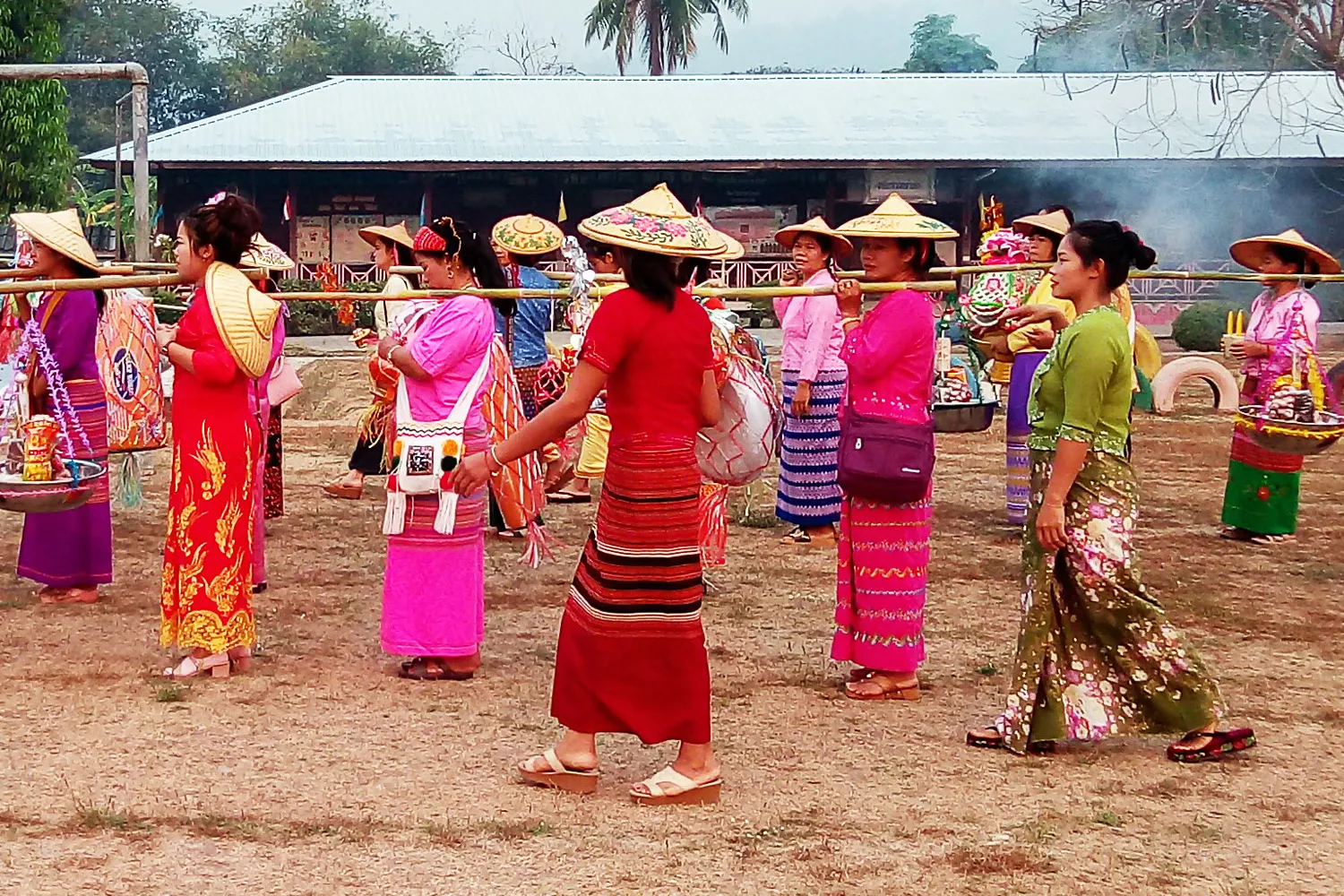The Shan people’s migration and settlement in Mae Hong Son province have left a significant historical and cultural impact on the region. The evidence for their migration comes from the accounts of elderly Shan individuals and historical records that provide insight into this important chapter in Mae Hong Son’s history. The Shan people originated from the northeastern region of Myanmar, known as “Shan State,” specifically from towns situated along the Salween River, such as Maung Mog Mai, Maung Nai, and Maung Lang Kur. They began moving to Mae Hong Son around the year 1831 during the reign of King Pra Nang Klao in the Rattanakosin era. Initially, the Shan people would come to Mae Hong Son to plant crops seasonally and return to Shan State after the harvest. This pattern continued until around 1856 when they started settling in Baan Pangmoo, Pangmoo subdistrict, Maung district, Mae Hong Son province. Here, they engaged in farming and cultivation as their primary livelihood. In 1866, Chao Kaewmaungma was sent from Chiang Mai to Mae Hong Son to capture and train elephants for labor. This event marked a significant shift in the Shan people’s settlement pattern, as Chao Kaewmaungma gathered the scattered Shan communities and encouraged them to settle together in the Mae Hong Son area. The year 1874 saw further developments as Baan Mae Hong Son and Baan Pangmoo had become populous enough to warrant an upgrade to a town status, resulting in the establishment of “Mae Hong Son Town.” A Shan individual named “Shangale” was appointed as the first ruler, holding the title of “Praya Singhanartracha.” Subsequently, the governance structure evolved, leading to the appointment of three more rulers before the establishment of Mae Hong Son province as a formal administrative entity.
The Shan people of Mae Hong Son have upheld their rich traditions, cultures, and way of life for well over a century. Their strong commitment to their cultural heritage is evident in their daily practices, lifestyle, and interactions. Despite geographical separation due to political boundaries, the Shan in Mae Hong Son maintain a close and brotherly relationship with their counterparts in Shan State, Myanmar, engaging in trade and visiting each other regularly, even amid occasional political challenges. Central to the Shan identity is their distinctive attire, which reflects the uniqueness of their culture. Both Shan communities, in Mae Hong Son and Shan State, have their own styles of dressing. While the overall design is similar, variations in details take into account factors such as social status, gender, age, and appropriateness of clothing. For women, blouses with both long and short sleeves are common, with buttons attached on the left side and the lower part often adorned with Thai sarongs. Shan men typically wear long-sleeved cotton shirts with round collars split in the middle and Chinese buttons, paired with wide-legged trousers. Historically, Shan men were known for carrying shoulder bags and decorative swords, while many adorned their bodies with intricate ink tattoos. Both men and women traditionally wore turbans or hats, referred to as “Gub Tai,” when venturing outside their homes, adding to the distinctiveness of Shan attire. Language is a significant aspect of Shan culture. They have their own spoken language, known as “Gwam Tai,” which, while distinct from the Myanmar language, bears some resemblance to the Thai language. Their written language, called “Leek Tai,” uses alphabets that have been in use since ancient times. These characters share similarities with Mon and Myanmar scripts, highlighting the Shan people’s historical connections and cultural ties. The steadfast commitment to their traditions, distinct dressing, language, and cultural practices collectively form a strong bond within the Shan community, preserving their heritage and identity through generations, both in Mae Hong Son and across the borders of Shan State.

